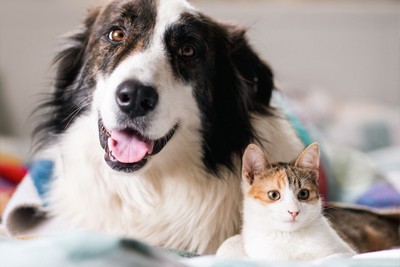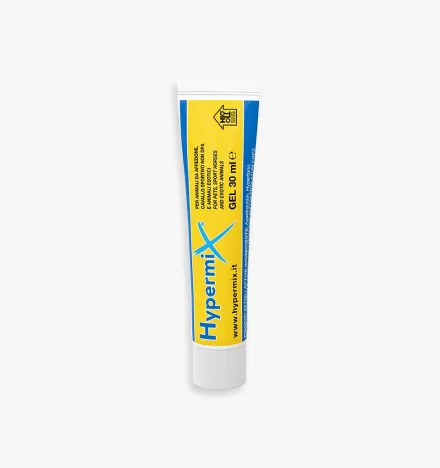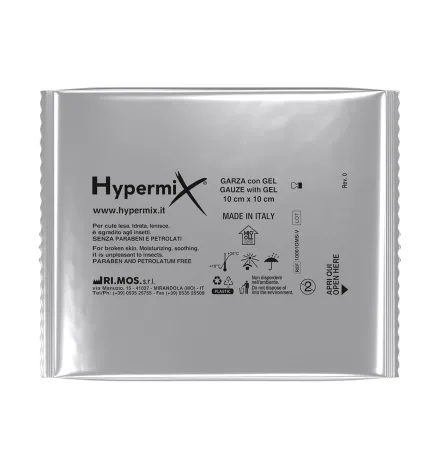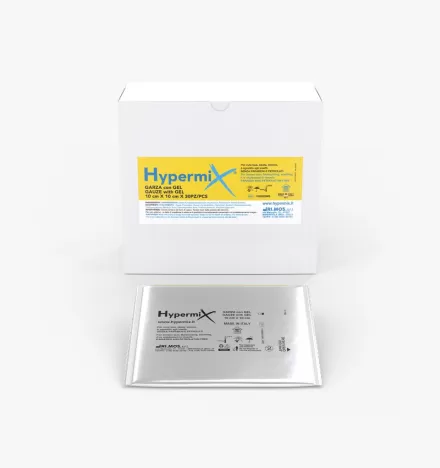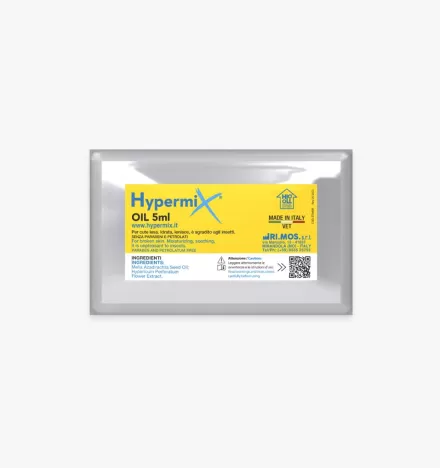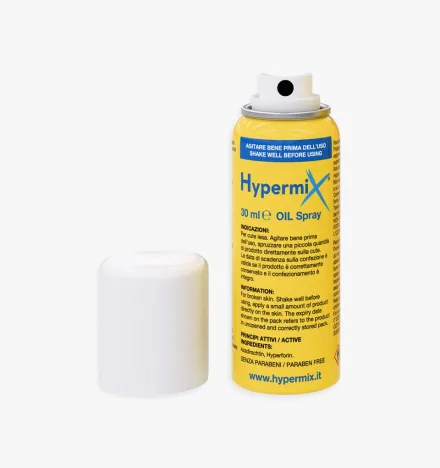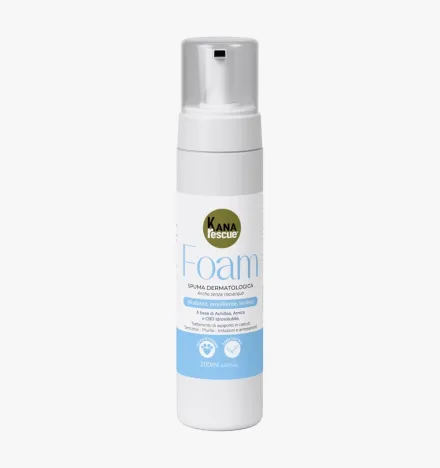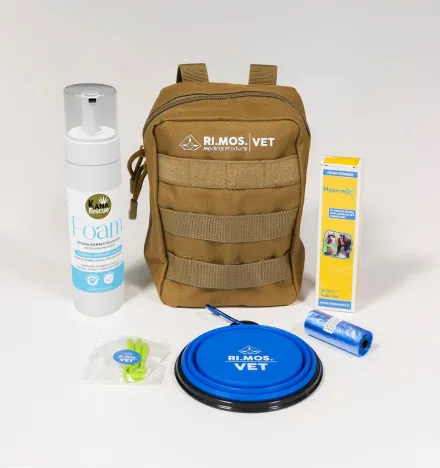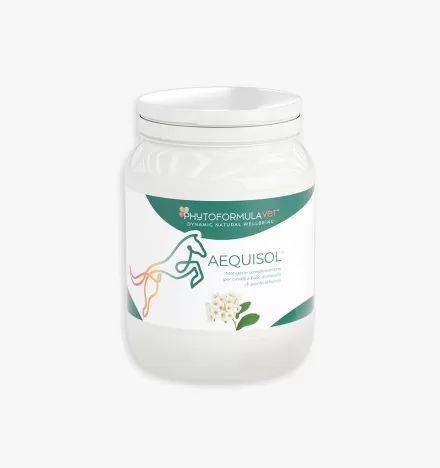Pressure sores in animals: everything you need to know
Pressure sores in animals are a condition that can develop in individuals forced into long periods of immobility, often due to chronic illness or during recovery from surgery. These injuries can be painful and difficult to treat, making prevention and timely management essential.

PRESSURE SORES: RECOGNIZING THEM, TREATING THEM, PREVENTING THEM
Pressure sores, or pressure injuries, develop on bony areas subject to prolonged compression such as elbows, hips, and hocks, where proper blood circulation is prevented. They often begin with reddening of the skin that over time evolves into deep ulcerations that are difficult to resolve. The severity of these lesions varies according to the duration of pressure, the animal's health condition, age and environment.
Detecting early signs of discomfort and intervening promptly with preventive measures and targeted treatments is critical to avoid complications.
WHAT ARE PRESSURE SORES?
Pressure sores are wounds that form as a result of prolonged compression of the skin and underlying tissues, which disrupts local blood flow. This process causes progressive damage that begins with simple redness and can evolve into deep ulcers, sometimes exposing underlying muscles or bones.
In animals, these lesions develop mainly at bony prominences, such as elbows, hips, and hocks, especially when the animal is forced into long periods of immobility.
Pressure sores are more common in the elderly, very debilitated or those with serious illnesses that reduce the ability to move or worsen the quality of the skin.
Similar to humans, pressure sores are a serious complication that requires prompt attention to avoid infection and further tissue damage. Recognizing them and understanding their nature is the first step in dealing with them effectively.
CAUSES
Pressure sores in animals are caused primarily by a combination of prolonged immobility and continuous pressure on specific areas of the body, often at bony prominences such as elbows, hips, and hocks. This pressure reduces local blood flow, impairing the supply of oxygen and nutrients to tissues, which over time undergo progressive damage to the point of necrosis.
Additional factors that increase risk include:
- Pre-existing or post-surgical wounds: areas already damaged or undergoing surgery are more vulnerable to injury formation.
- Parasitic infestations: the presence of larvae or other parasites can aggravate the condition of the skin, further weakening the tissues.
- Diabetes or other metabolic diseases-these conditions impair microcirculation, reduce the ability to heal, and increase the risk of infection.
- Older age: Older animals have less elastic and thinner skin, making them particularly prone to developing sores.
- Malnutrition or poor nutrition: a diet low in essential nutrients worsens the overall health of the skin, slowing down regeneration processes.
Animals forced into long hospital stays, with neurological problems, severe obesity, or other conditions that restrict movement, are most at risk. Ensuring that they can rest on appropriate surfaces, such as orthopedic mattresses, and regularly monitoring critical areas is essential to prevent the onset of sores.
SIGNS AND SYMPTOMS
Pressure sores often begin with mild signs but can rapidly progress if left untreated. The first visible symptom is usually a persistent reddening of the skin at the pressure areas, which does not disappear even after the stimulus is removed.
As the injury progresses, they may occur:
- Slight swelling: the affected area may appear warmer and slightly swollen.
- Boils or blisters: indicate that tissues are beginning to be compromised.
- Open wounds: in more advanced stages, the skin breaks down, resulting in painful ulcers.
- Deep lesions: in severe cases, ulcers can expose underlying tissues, such as muscle or, in rare cases, bone.
Other associated signs include local infections, with purulent discharge and unpleasant odor. In some circumstances, they also affect the animal's behavior, which begins to continuously lick the affected area or show irritability due to pain.
Recognizing these symptoms early is essential to intervene early and prevent more serious complications. Immediate veterinary evaluation allows the severity of the injury to be determined and the most appropriate treatment to be set.
Complications
Pressure sores can cause significant complications, the most common of which is tissue necrosis, which can extend to involve muscles and bones.
Infections pose a significant risk, as they can affect both the surface of the lesion and the deep planes, possibly evolving into osteomyelitis. In severe cases, they can spread to the bloodstream, causing septicemia.
In addition, conditions such as malnutrition or chronic diseases can delay healing, further aggravating the clinical picture.
DIAGNOSIS
Diagnosis of pressure sores is based on careful observation of the lesions by the veterinarian, who will assess the depth, extent, and condition of the affected tissues to identify any underlying infection or complications, such as necrosis or deep inflammation. In some cases, additional diagnostic tests, such as bacterial cultures or tissue analysis, may be necessary to determine the most appropriate treatment to be taken.
PREVENTION
In order to prevent the occurrence of pressure sores in animals confined to long hospital stays or with reduced mobility, it is essential to take targeted steps:
- Changing the animal's position frequently helps reduce pressure on the areas most prone to injury.
- Providing adequate support, such as mats or orthopedic mattresses, helps to better distribute body weight, reducing the risk of skin damage.
- In the presence of motor difficulties, wheelchairs can facilitate movement and relieve pressure on critical areas.
- For incontinent animals, keeping the skin dry and clean is essential to prevent irritation and infection.
- A balanced, highly digestible diet promotes the maintenance of healthy skin, while in overweight individuals a gradual reduction in weight decreases stress on pressure points.
- Gentle massages in the areas most at risk can also stimulate circulation and improve tissue oxygenation.
Following these preventive measures can significantly reduce the risk of injury and ensure a better quality of life for the animal.
NATURAL REMEDIES
I rimedi naturali possono essere un valido supporto nel trattamento delle piaghe da decubito, soprattutto nelle fasi iniziali o come complemento alle terapie veterinarie.
- Neem: with its antimicrobial and antifungal properties, it helps prevent infection and promotes healing of injured skin.
- Aloe Vera Gel: Soothes, moisturizes and promotes tissue regeneration due to its healing and anti-inflammatory properties.
- Hypericum Oil: antiseptic and regenerative, helps reduce the risk of infection and accelerates healing of damaged skin.
- Coconut Oil: rich in fatty acids, it keeps the skin moisturized and creates a protective barrier against bacteria.
- Olive Oil: excellent for massage in at-risk areas, stimulates circulation and promotes tissue oxygenation.
- Chamomile compresses: soothing and calming, reducing irritation and relieving discomfort.
Although helpful, these remedies are not a substitute for veterinary advice and should be used with care to avoid unwanted effects or delays in healing.
MEDICAL TREATMENTS
The treatment of pressure sores in animals is complex and requires constant care, as the main obstacle to healing is tissue crushing, which prevents adequate blood flow and slows down reparative processes.
In addition to preventive measures, such as frequent position changes and the use of appropriate surfaces, treatment relies on the application of specific ointments formulated to protect the lesion from external agents and stimulate healing of damaged tissue.
In some cases, topical or systemic antibiotics, alone or in combination, are used to prevent or treat secondary infections, which are a common complication.
Ulcers-supported by intrinsic factors that hinder the healing process such as insufficient blood supply to the tissues-require more intensive and prolonged treatments.
Unfortunately, response to treatment can be limited, especially in severe cases where tissues are severely compromised. Healing, when it does occur, is often slow and depends on continued attention and careful management of the injury.
NATURAL INNOVATION FOR THE TREATMENT OF PRESSURE SORES IN ANIMALS
Research in the field of animal health has led to the development of increasingly advanced and natural solutions for the treatment of wounds and skin injuries. Among these, Hypermix® represents a unique innovation due to its combination of plant ingredients, such as Hypericum and Neem, known for their regenerative, soothing and antiseptic properties.
Hypermix® is formulated to provide safe and effective treatment for animal wounds, from domestic to equids and even exotic animals.
Among the treatment options available to treat pressure sores we recommend:
- Hypermix® Gel: ideal for the daily management of pressure sores and wounds. Its consistency allows precise application and prolongs tissue contact, keeping them hydrated and creating a barrier against infection.
- Hypermix® Medicated Gauzes: perfect for covering extensive or deep injuries. Impregnated with Hypermix® Gel, they protect injured tissue, promote repair and help maintain hydration.
With Hypermix®, all it takes is three actions: cleanse, apply and, if necessary, cover the wound. It is a safe product and does not require the use of disinfectants.
GENERAL TIPS FOR THE TREATMENT OF PRESSURE SORES
First of all, it is recommended to have the animal change positions every 2 to 3 hours to relieve pressure.
It is essential then:
- Inspect the skin daily, paying special attention to the most vulnerable areas, to identify early signs of inflammation or redness.
- Keep the animal's skin clean and dry, which is essential to avoid infection. Gently wash the area with antiseptic solutions and dry it thoroughly before applying Hypermix® Gel and Medicated Gauzes.
- Apply moisturizing creams or lotions to keep the skin supple and reduce the risk of new injuries.
- See your veterinarian to monitor the evolution of the sores and adjust the treatment according to the animal's response.
Products to treat Pressure Sores
Do you have a question?
Our team of experts has an answer for you!
What steps should be taken during the healing phase to prevent the animal from licking or damaging the wound?
During the healing phase of a wound, the animal may experience itching caused by normal healing. In such cases, specific devices such as Elizabethan collars, inflatable collars, breathable containment bandages, and braces can be used to avoid self-traumatization due to scratching, licking, and pecking.
What are the stages of wound healing?
There are three stages of wound healing:
Stage 1: exudative or inflammatory or also called cleansing stage
Stage 2: granulation or proliferative phase (granulation tissue formation)
Stage 3: epithelialization or regenerative phase (scar formation and epithelialization)
Highlights
Choose the beneficial properties of our effective and safe plant-based products for the well-being and care of your pets.
Subscribe to the Newsletter, for you 10% discount!
Stay up-to-date with all the latest news, promotions and exclusive offers from RI.MOS. VET.

